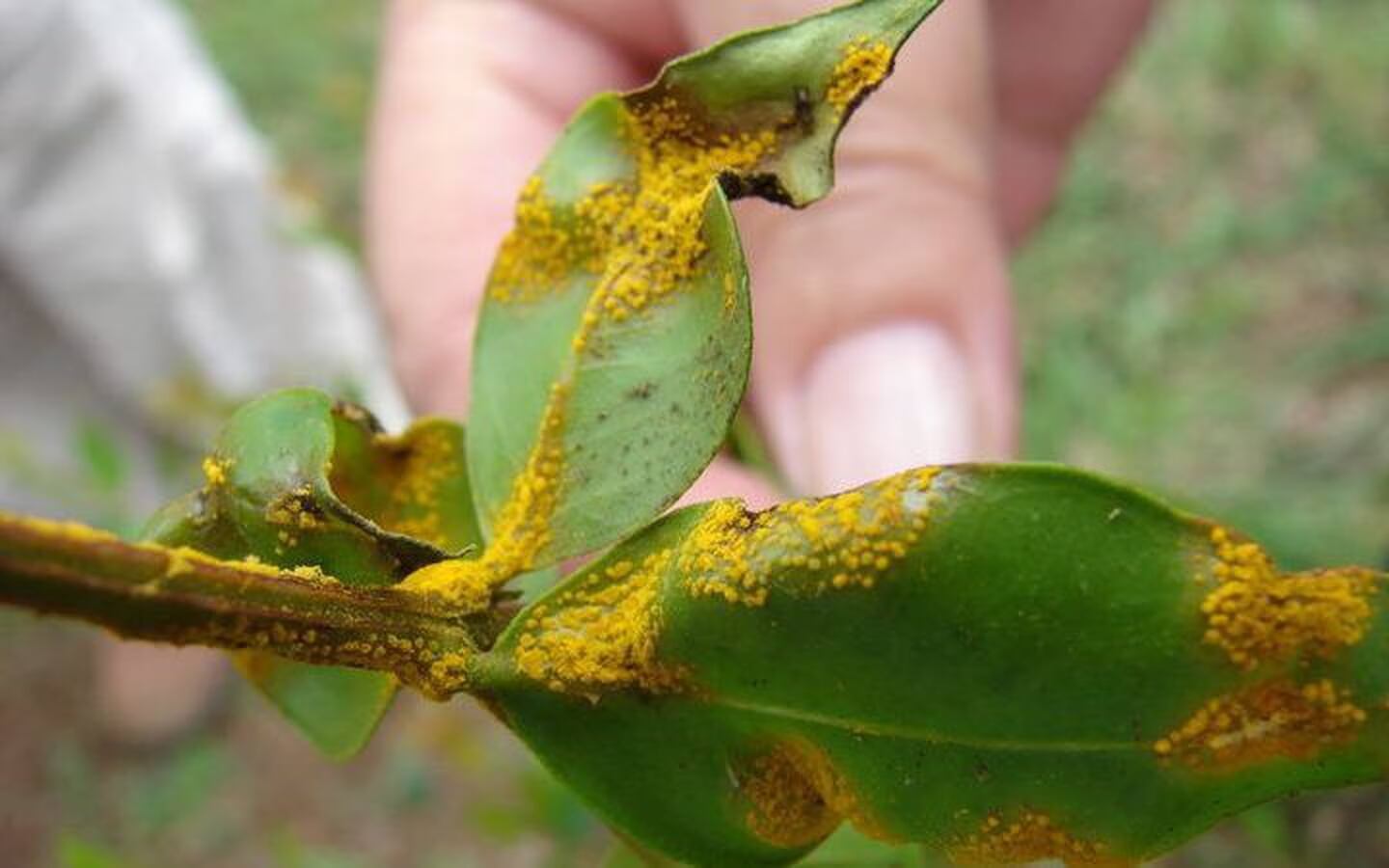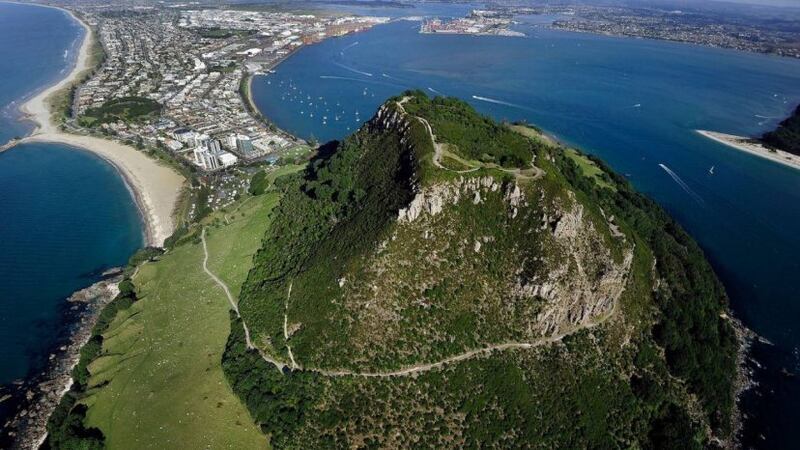Myrtle Rust has been found on Mauao. Photo / File
Closures on some of Mauao’s walking tracks are likely as authorities work to remove and research a “much larger scale” of Myrtle rust found in several small areas of the mountain.
Mauao Trust board member Matemoana McDonald said the invasive disease was found on the Oruahine, Waikorire, and Te Ara Tūtanga tracks on Mauao.
Local track closures have and will need to take place to allow for removals and research. But these closures would be well communicated ahead of time, she said.
“Although closing the tracks long-term would be beneficial in reducing human-induced spread, unfortunately closing these tracks would not stop the primary mode of spread which is wind dispersal,” she said.
“Furthermore and unfortunately, our community has time and time again showed they are unwilling to respect closures which results in damaged equipment (closure gear), and disrespectful interactions with our kaitiaki (guardians).”
Myrtle rust has the potential to damage many ecologically, economically, and culturally significant tree species including pōhutukawa, rāta, and mānuka which are members of the myrtle family.
Mauao has a large number of these trees, particularly pōhutukawa which often features in the many photographs taken of the mountain each summer.
Myrtle rust has infection “seasons” which are based on local climate condition.
“Unfortunately this year we have found a much larger scale of infection in several small areas of Mauao.”
Myrtle Rust was first discovered on Mauao on February 2022 “but at a smaller scale”.
“This season has provided exceptionally good environmental conditions that have been perfect for the growth and spread of Myrtle Rust since the removal of previous infections.”
McDonald said humans were a vector of Myrtle rust due to the sticky nature of the spores and asked people walking the tracks to try to avoid brushing past pōhutukawa foliage as it can easily be spread further.
“If you see it on the maunga or at home, please do not touch it as you may end up spreading or releasing spores.”
Trackside pōhutukawa, mainly small self-seeded trees, and the epicormic growth [highly susceptible to infection] of larger trees was being removed to reduce human contact, she said.
McDonald said there were still many “unknowns” regarding Myrtle rust “but we are very concerned about the potential effects on our environment”.
“We are doing local removals of infected plants but we are also about to start a Masters Research project with Scion Research into genetics to try to understand and identify different hybrids of pohutukawa and their susceptibilities to Myrtle Rust.”
It also hoped to map the spread of Myrtle Rust on the maunga on and off track to better manage its response, she said.
The genomics research was an iwi-led project by the Mauao Trust in partnership with Nga Poutiriao o Mauao - a joint administration board set up under a memorandum of understanding between the council and the Mauao Trust - and Myrtle Rust experts.
McDonald said the project will provide opportunities for tangata whenua to develop and grow expertise in genetic research specific to Mauao and Myrtle Rust, as well as build agile and informed kaitiaki in managing biosecurity on the maunga.
A public blessing and opening of the research will be coming soon, she said.
“The trust will also work on some resources and information to share with the public about Myrtle rust including how to identify it, what to do and who to call if it’s sighted.”
Mauao Trust posted on its Facebook page yesterday that Myrtle rust was “unfortunately now present on Mauao”.
It said its myrtle rust researcher met with scientists from Scion to analyse the rust.
“Some areas may be able to be isolated to prevent it spreading, otherwise research is still being done around prevention.”
The Ministry of Primary Industries has long campaigned for the need for early detection and containment, where possible, of myrtle rust.
Myrtle rust spores are microscopic and travel large distances by wind, or by insects, birds, people, or machinery. It is believed that wind carried spores here from Australia, where myrtle rust was first found there in 2010.
People were encouraged to message the trust with a photo and location on Mauao if they found any rust on pōhutukawa.
The fungus has spread rapidly since the first case in New Zealand was identified in 2017.
Tauranga City Council has been contacted for comment.

What Myrtle Rust can look like. Photo / NZME
Help track the spread of myrtle rust
It is important to understand where myrtle rust has spread to and where it is active. You can help by looking out for signs of myrtle rust.
If you suspect you have found the disease:
don’t touch it
take a clear in-focus photograph
submit the photograph to iNaturalist.
Make sure you label your finds as myrtle rust, noting what host plant it has been found on. This information helps experts confirm if the signs are correct.
More information can be found on the Ministry for Primary Industries or the Myrtle Rust website.

